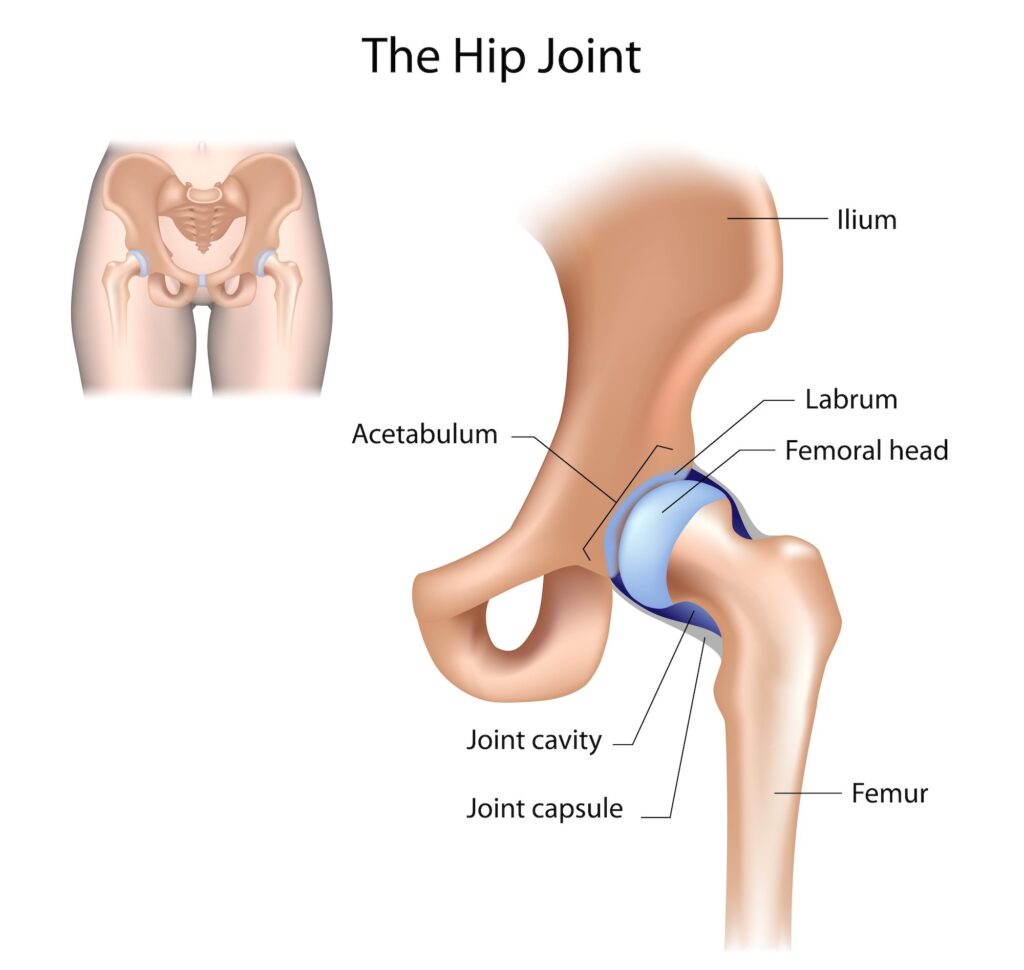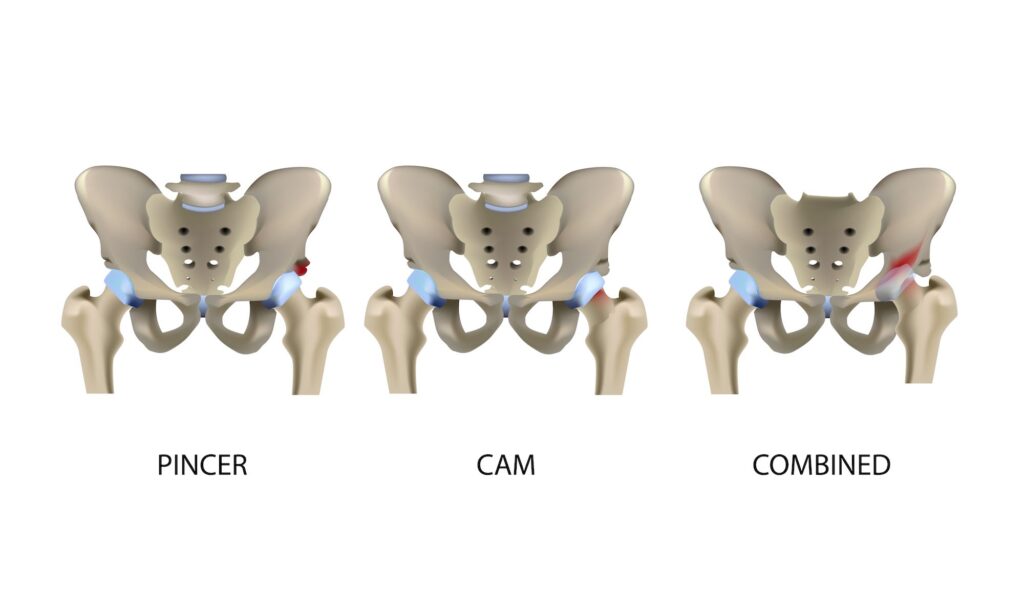Femoroacetabular impingement (FAI) is a condition that affects the hip joint.
In this blog post, I will discuss FAI, symptoms, and treatment options. I will also share some of the alternatives to surgery for treating this condition.
What is femoroacetabular impingement (FAI)
FAI occurs when there is too much friction between the femur and the acetabulum, which can lead to pain and decreased mobility. The femur is the bone that forms the thigh, and the acetabulum is the socket in the pelvis where the femur articulates.

In a healthy hip joint, the femur and acetabulum fit together snugly. However, in some people, the femur and acetabulum do not fit together correctly. This can cause the bones to rub against each other, which can lead to pain and decreased mobility.
FAI can also cause the cartilage in the hip joint to deteriorate, which can eventually lead to osteoarthritis.
Types of FAI
There are three types of FAI: pincer, cam, and combined impingement.

Pincer impingement occurs when the rim of the acetabulum is abnormally curved. This causes the femur to pinch the acetabulum, which can lead to pain and decreased mobility.
Cam impingement occurs when there is an abnormal bump on the femur. This causes the femur to rub against the acetabulum, which can lead to pain and decreased mobility.
Combined impingement occurs when there is both pincer and cam impingement. This can lead to even more pain and decreased mobility.
What are the symptoms of FAI?
There are a few different symptoms of femoroacetabular impingement, which include:
- Hip pain that is aggravated by activities such as walking, running, or climbing stairs
- Stiffness in the hip joint
- Decreased range of motion in the hip
- A clicking or snapping sensation in the hip joint
- Pain that radiates from the hip to the groin, thigh, or knee
If you are experiencing any of these symptoms, it is important to see an orthopedic surgeon so that they can properly diagnose femoroacetabular impingement. The good news is that there are a few different treatment options available for this condition.
How is FAI treated?
The first line of treatment for femoroacetabular impingement is typically non-surgical, which may include:
Physical therapy: A physical therapist can help to stretch and strengthen the muscles around the hip, which can help to reduce pain and improve range of motion.
Anti-inflammatory medication: Over-the-counter or prescription anti-inflammatory medication can help to reduce pain and inflammation.
Corticosteroid injections: These injections can help to reduce inflammation in the hip joint.
Activity modification: Avoiding activities that aggravate the hip, such as running or high-impact sports, can help to reduce pain.
If non-surgical treatment options are not effective, surgery may be recommended. The goal of surgery is to correct the alignment of the femur and acetabulum so that they fit together properly. This can help to reduce pain and improve range of motion.
The most common type of surgery for femoroacetabular impingement is hip arthroscopy, which is a minimally invasive procedure.
If you are considering surgery for femoroacetabular impingement, it is important to discuss the risks and benefits with an orthopedic specialist.
Are there any alternatives to surgery for treating FAI?
There are also a few alternatives to surgery that you may want to consider. These include PRP injections and orthopedic stem cell therapy.
If you are experiencing any of the symptoms of this condition, I invite you to schedule an appointment so that you can get the proper diagnosis and treatment.
